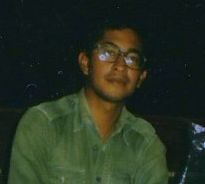
On the 15th of November, 2013, I received a letter from a boyhood acquaintance.
Hi Amitav,
I have been a great fan ever since In An Antique Land but for reasons of personal connection The Glass Palace is the book that my mother and I have re-read a few times. My father grew up in Burma and it is uncanny how the Burmese elements of that book echo the stories that I grew up with – from my father, Uncle and Grandfather. When war came my father was co-opted by the Government of India to help with the refugee problem and was one of the last Indians on the Mandalay – Kalewa – Tamu route to exit Burma. My grandfather came out of the northern route through the Hukawng Valley and barely managed to survive the terrible malaria that seems to have infected so many of the people on that route.
Sadly my father died before The Glass Palace was published. But he did manage to leave behind a short account of his experiences on the trek out which is interesting reading. I have finally begun to read more about that whole event, with a vague idea of filling out my father’s account with more background material and the stories of others who had shared this experience. While doing some web searches I chanced upon a story told to you by another refugee who took this same route. Frustratingly, despite having bookmarked that page (as I thought), I now can’t find it. So I thought I’d write to you and ask if you had found any more such accounts that you could perhaps put me on to? There are a handful of British accounts and books of this event, but by and large the British were given much greater help and assistance – including better amenities at the refugee camps as my father mentions – so their experience was perhaps a little bit different to that of the Indians. But of course it all adds to the ‘thickness of the stew’ in terms of the story I am somewhat desultorily thinking of putting together (purely for private circulation amongst the family).
It would be very good to hear from you Amitav and I would be very grateful for any help/pointers.
Best wishes
Hashim Tyabji
PS: In case you are interested in reading my father’s story I can mail it to you. I think your family had a similar experience? My father then joined the RINVR and volunteered to join the commandos and fought through the Arakan campaign.
A few days later I wrote back:
Dear Hashim
Very nice to hear from you. I didn’t know about your Burma connection but somehow am not surprised at all. Many Indian families had close links with Burma at the time.
I think the post that you are referring to is this one: https://amitavghosh.com/?p=432 . Do look at the comments thread – a lot of people have written in with their experiences.
I am really glad to know that your father wrote an account of the 1941-42 exodus from Burma. I think it’s important to compile every scrap of material about that event. There are very few published accounts written by Indians. The best source that I’ve ever found is a diary by an Indian doctor (one Dr Ghosh actually). It’s an unpublished hand-written ms – completely fascinating. What is interesting is that unlike British accounts of the march it does not focus primarily on disease, hardships etc – much of it is actually about the racial aspects. As you are probably aware, the routes were segregated into ‘black’ and ‘white’ routes, the former being much more taxing. Many Indians, especially people of means, did their best to get permission to use the white routes. I think this may be one reason why they found it difficult to write about the march.
I’d certainly be interested in seeing your father’s account. And if you would like to write something about your family’s Burma connection I would be glad to post it on my blog. I’ve been thinking of setting up a ‘Burma Exodus Archive’ on my website, to serve as a resource for future research. Your father’s memoir would be perfect for that. I very much look forward to reading it.
And what have you been doing all these years? Do let me know.
With my best wishes
Amitav
I learnt later that Hashim had been wandering the jungles of Nepal and India after finishing a history degree at Loyola College, Chennai. Denied entry into the Army due to poor eyesight, he went to work for Tiger Tops Jungle Lodge in Nepal for what was supposed to be a short stint. But once in the jungle he found his true vocation as a naturalist, ending up as Director of operations for Tiger Mountain India. At the age of 30 he left the company and built himself a house at the edge of Bandhavgarh Tiger Reserve in 1991, where he lived for several years working with local communities in development and conservation, serving as an honorary wildlife warden and as a member of the Indian Board of Wildlife. An interest in birds lead to a long-term bird survey of Bandhavgarh which was published as a paper in the Journal of the BNHS and a guide to the park. He has also been scientific advisor to wildlife films and co-authored a couple of books on Indian wildlife and tigers. In 2001, along with a few friends he started a company called Wild India Camps.
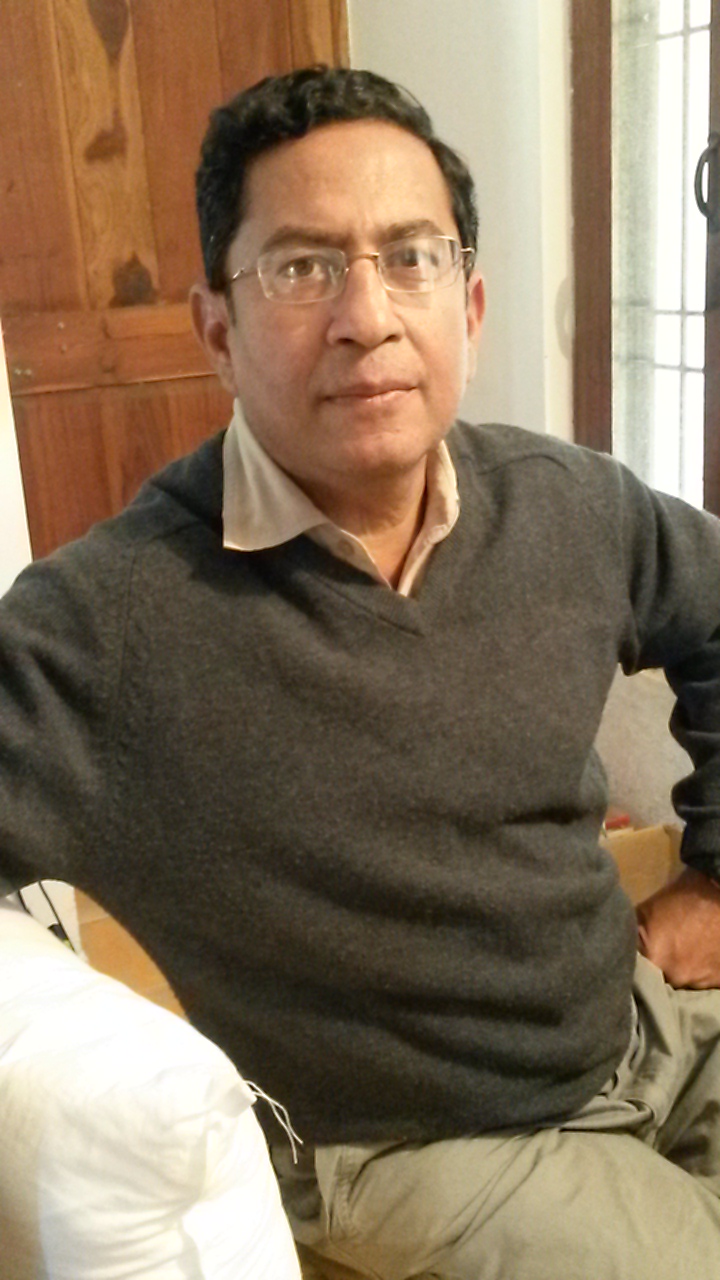
The company owns the Bagh Van Lodge (currently Taj-managed), which pioneered tourism in Pench, and Forsyth Lodge which helped create a new tourism model in Satpura Tiger Reserve. Hashim now spends much of his time in England where his wife is a GP. But he retains strong connections with central India and continues to be involved in conservation work.
The typescript of The Burma Story, 1941 – 1942, by Captain Nadir Salahuddin Tyabji, (Hashim’s father) arrived in my mailbox shortly afterwards.
The roughly 30,000 word memoir was composed over many years. Hashim writes: ‘[My father] was born on 13 July 1913 and died on 13 Oct 1996. He had just turned 29 at the end of the memoir. Father had kept a rather patchy diary through this period but many pages had disappeared or were too badly water damaged to read. He did also consult bits of his official report – again I only saw fragments (when the National Archive people came to take all my grandfather’s papers in the 1980’s I think they took some of father’s papers as well). He actually dictated the first draft some time in the mid-1980’s on the insistence of his maternal cousin Saad Ali. He then took several years as I recall in finalising the memoir. I was working away from home all this time and sadly didn’t take enough interest in his diaries.
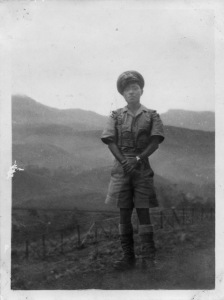
Both Saad and I were also keen that he write the next chapter of the Burma story. This was his service with the navy when he volunteered for the beach commandos. But he died before that.’
In researching my books I have read many wartime memoirs. Captain Tyabji’s is without a doubt, among the best of them. I know of no better account of the evacuation of refugees from Burma in the initial phases of the war. Richly textured and remarkably well-written, The Burma Story also brings vividly to life a milieu that vanished almost overnight after the Japanese invasion of Burma: the urbane, cosmopolitan world of pre-war Rangoon.
Captain Tyabji was born into a family of unusual distinction. His grand uncle, Badruddin Tyabji, was the first Indian Chief Justice of the Bombay (now Mumbai) Supreme Court and was famously progressive in his views, especially where it concerned the rights of women. He was also one of the founding members of the Indian National Congress and was elected president of the party in 1887. His grandfather Abbas Tyabji was Chief Justice of the Baroda High Court when, in disgust over the Jalianwallah Bagh massacre, he left to join Gandhiji. He and many other members of the family were ardent Gandhians and close personal friends of Mahatma Gandhi. Indeed Abbas Tyabji was designated his deputy on the Dandi Salt March and took over after Gandhiji was arrested.
As Sulaimani Bohra Muslims from Surat, in Gujarat, the Tyabjis belonged to one of the Indian subcontinent’s most successful mercantile communities. They were perhaps somewhat unusual in that they were primarily a family of lawyers and jurists, but they also had extensive business interests. At one time they owned half of Bombay’s Malabar Hill; their palatial residence is now the campus of Sophia College. A Mumbai street and several institutions still bear the Tyabji name.
Like many South Asian mercantile families the Tyabjis also had commercial interests in Burma. Captain Tyabji’s father, Salahuddin Abbas Shamsuddin Tyabji, owned rice mills and was deeply involved in Rangoon’s civic affairs. Captain Tyabji writes of him: ‘Father was variously involved as member of the Burmese Legislative Assembly, Member of the Rangoon Electricity Board, Member, Railway Board, Member Exec. Committee, Indian Chamber of Commerce etc. etc. His work schedule covered a minimum of 12 – 14 hours per day but I can never remember him losing his jaunty alert carriage and general briskness.’
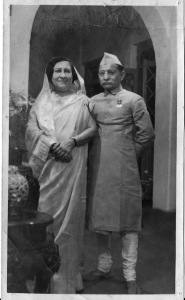
Captain Tyabji’s mother, Akhtar Tyabji, was also active in Rangoon’s social circles.
She founded and presided
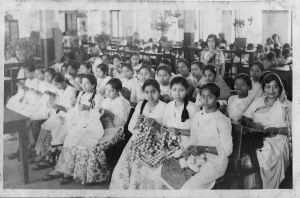
over the Zeenat ul-Islam school
for girls and

various other charitable institutions endowed by the family.
One of Akhtar Tyabji’s most successful ventures was aimed at bringing together Burmese, Indian and British women.

It was the Monday Afternoon Club, which also assisted her in some of her other initiatives.
Captain Nadir Tyabji, however, chose not to enter the family business. In 1941, when this memoir begins, he was the Sales Representative in Burma for Tata Oil Mills Co. (TOMCO). He writes: ‘Being basically responsible for Promotion and Marketing I had an invaluable opportunity of visiting the remotest corners of the country for detailed market surveys which led to my acquiring, willy nilly, deep insights into the distribution pattern of Indian communities… The Indians and Chinese constituted between them, the most efficient distributive agency in the country and were, literally, all pervasive, even at the hamlet and village level.’
This background is important, I think, in situating Captain Tyabji’s wartime experiences. He belonged to Rangoon’s elite, mixing easily with the city’s officialdom,

Nadir S. Tyabji &
Salahuddin A. S. Tyabji at the races, Rangoon
visiting the Race Course, frequenting exclusive clubs, and so on.
Yet, as a member of a small but wealthy minority community,

he occupied an interstitial position in the complex social web of colonial Burma.
He was thus able to look upon his world with unusually clear eyes, as for example in this striking passage: ‘There is little point in hovering over this heart-rending aspect of a war which held no meaning for the vast majority of the population – Burmese, Indian or Chinese. There was neither sympathy nor understanding for the British. They dominated the administration and economy of this country but were seen as a transient element with which the common people had no point of contact at any level. The Japanese advance into Burma further destroyed the myth of western invincibility and with it whatever tenuous links may have survived the hundred odd years of exploitation and mindless domination at all levels.’
But it is clear also that this story was moulded and mellowed by the circumstances of its telling, which came about after the passage of many years: it is hard to believe that Captain Tyabji could have maintained so equable a tone had he been writing in the immediate aftermath of the events he had witnessed. Yet every now and again something of the raw horror of those experiences does break through, as for example in this passage: ‘I dared not lift my head but tried to take a quick look from the corner of my eyes at the scene around me. Even in that limited field of vision I could make out the extent of devastation and death; bodies and limbs scattered close to me with the smell of blood mixed with that of cordite, impossible to keep from penetrating my nostrils.’
Every survivor of that terrible ordeal must have witnessed similar scenes; they must all have been haunted, through the rest of their days, by images like this one. Sadly, only a handful recorded their experiences. We are fortunate that Captain Tyabji was among the few who did.
I am grateful to Hashim Tyabji and his family for giving me permission to post the memoir, and the accompanying pictures, on this site. Captain Tyabji’s memoir will appear here in a series of twelve instalments, through the month of December.
The first instalment is below.
___________________________________________________________________
The Burma Story
(Dec 1941 to July 1942)
by

Captain Nadir Salahuddin Tyabji
(Indian Navy Retd.)
What follows is the story of my last four months in Burma at the tail-end of a thirty year sojourn which I remember as the happiest, most carefree years of my life.
- These 4 months covered the period December ’41 to April-May ’42 during which I became a part of the giant Evacuation exercise entailing the migration of hundreds of thousands of Indian settlers in Burma the number involved has been variously estimated at between 10 – 20 lakh using three major routes e.g. Prome – Taung-Up in the rain shadow of the Arakan Yomas; Mandalay-Kalewa-Tamu-Palel-Imphal-Dimapur route through Manipur and the Mandalay-Myithykina route mostly confined to the retreating British Indian Army for re-grouping in India.
- The Japanese Army occupied Malaysia end 1941 and made no secret of its intention of making a dash for India through Burma without loss of time. However, the Government of Burma seemed to be supremely confident of its ability to deal with the Japanese if and when they moved up; this confidence did not extend to the citizenry at large for it was increasingly evident that neither the Army nor the Air Force were either qualitatively or quantitatively equipped to stem the Japanese tide.
- My last trip down south to Moulmein, Yem, Tavoy & Mergui was made in October ’41 in connection with my work as TOMCO representative in Burma, and it was then that I became fully alerted to the extent and intensity of Japanese probing and intelligence operations in the Tenasserim archipalego contiguous to Siam. I was told that Japanese patrols were blatantly driving up to Mergui Tavoy and even Ye on probing and intelligence missions and in the process had been terrorising, molesting and literally looting the villagers along their axis of operations. It was on these trips that I acquired a clearer idea of the implications of any turmoil created by a Japanese advance, on the small Indian population in the area (mostly small shopkeepers and agricultural labour). I also got the feeling that the Burmese were just waiting for an opportunity to drive the Indians out and take their place in the scheme of thing, however ill-equipped to do so. Until then the Indians were a vital element in the Burmese economy – urban and rural – providing a hardworking and cheap labour force for the vital sectors of Burmese economy – agriculture, rice milling, saw milling and transport. On the other hand it was the Indian trader, small or big, who provided the vast distribution and collection network in the rural areas and dominated trade and commerce in the urban centres. These people had begun to get restive and from odd bits of gossip which I picked up at Ye, it became evident that any Japanese advance from the south would result in a massive movement of Indians towards Rangoon as a take-off point for the run to India mainly by the sea routes as the quickest and cheapest. With the reduction of steamer services, these people would have no alternative but to take the overland routes of which at the time, I was myself woefully ignorant but which obviously would be a hazardous alternative.
- The Japanese advance into Burma commenced Nov-Dec ’41 and was preceded by mounting air activity on the Moulmein, Thaton, Pegu and Rangoon not so much to inflict damage as to create a sense of terror and panic among the labour concentrations (all Indian), leading to their taking to the major road systems, running in a North-South axis and thus creating a critical problem for the movement of essential military and government traffic. These Indian streams were joined by an outpouring of Indian communities settled in the interior and this mighty tide started making its way north by every available or affordable means – Road transport, river steamers and boats and the railway. This inexorable tide took almost a month to reach its peak, end December 1941 and it was at that stage that I became a part and parcel of the organisation which was being set up in order to ensure that this mighty surge of humanity driven by almost primordial forces away from the Eye of the Wind did not destroy itself by the very dynamics of an upheaval of such vast proportions.
As already mentioned almost daily bombing raids by the Japanese and the growing public realisation of the pathetic inadequacy of defence preparedness both in the air and on the ground had led to a growing certainty that the British were on their way out. The dilemma for the majority of Indians and other foreigners concerned the grim options offered by the situation, whether to stay back and make their peace with the Japanese or risk the hazards of a trek of some hundreds of miles with wives and children, braving all the horrors inherent in such a journey – shelter, food and disease compounded by the continuous Japanese air attacks on the three moving columns as also Burmese brigandage along the hill tracks further north. And of course, above everything else was the clear realisation that a decision to move out would mean the end of a relatively comfortable life style and abandoning not only a well established source of livelihood but also the various assets created or gathered during the sojourn in Burma. It would also mean starting a new life at the end of the road in India – a nebulous question mark in itself.
However, for many the Day of Decision arrived sooner than anticipated in the shape of massive Japanese bombing raids on Rangoon on 23rd and 25th December 1941. Although 23rd was bad enough the 25th proved critical. At 0800 hrs. that morning Home Guard Volunteers of which I was one had been called for their normal parade including various Air Raid Drills. A slight tension at the Police Station soon erupted into a Red Alert indicating Bomber formations moving towards Rangoon.
The estimated number of aircraft was about 150 in three boxes of 50 each (light bombers with their fighter escort. The Home Guards were held firmly inside the Police Station and then round about 9 a.m. all hell broke loose. Most of the ack-ack guns were sited on roof tops together with Light and Medium Machine guns as morale boosters. However the Japanese pressed home their raid on various areas of the City using mostly Anti-personnel and incendiary bombs which created havoc and panic particularly in the Indian labour colonies around the Port area and Rice & Saw Mill complexes in suburbs like Kemmendine, Mahlwagon, Puzundaung and Botatung.
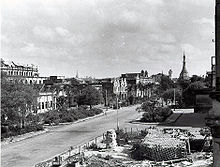
The Japanese did lose some aircraft but pushed home their attack relentlessly succeeding beyond any doubt in inflicting major damage to life and property in the heart of the City
and disrupting the City’s excellent Public services like Power, Water, road transport and telephones.
On the ‘All Clear’ being sounded the Home Guard Volunteers moved into their designated areas to ensure rescue, first aid and protection at the primary level and shift the homeless to appropriate Refugee Camps which had been set up in safer areas. It must be mentioned here that the Labour Colonies had received the severest treatment – all of them had been set ablaze and the inhabitants trying to get away had been literally mowed down by A.P. anti-personnel Bombs leaving the areas looking more like open-air butcheries than human habitations.
My ‘beat’ was in the Puzundaung area but in trying to get there on my bicycle I witnessed for the first time (not, unfortunately the last) the sheer scale of devastation in terms of property and human lives which such meticulously planned raids could achieve. Though we had taken every precaution to inform and educate the population on the absolute need not to be caught out of doors during a raid it was obvious that curiosity and an utter lack of comprehension of a totally new concept of terror as a strategic weapon had been responsible for the population – men, women and children – being caught out in the open and mowed down by the merciless accuracy of low level A.P. bombing.
In the result the streets were strewn with severed limbs, torsos sliced in half by shrapnel and bits and pieces of flesh and bone which had not so long ago been part of a moving thinking and handsome man or woman.
I eventually reached my Beat did what was expected mostly alas, in the shape of ensuring safety of property for the rightful owners, sending the injured to emergency centres for attention and trying to identify such of the corpses as were capable of being identified.
There is little point in hovering over this heart-rending aspect of a war which held no meaning for the vast majority of the population – Burmese, Indian or Chinese. There was neither sympathy nor understanding for the British. They dominated the administration and economy of this country but were seen as a transient element with which the common people had no point of contact at any level. The Japanese advance into Burma further destroyed the myth of western invincibility and with it whatever tenuous links may have survived the hundred odd years of exploitation and mindless domination at all levels.
In the event, this was my last visit to Puzundaung but it could not have mattered. There was little left to salvage and none to solace. I have no idea when it was rehabilitated – if at all.

Thanks a lot for sharing thoughts and montages from the past.
I have been searching for records which document the exodus of refugees from Rangoon to Akyab to Vizag. Mohter-in-law was one such refugee. Her father was the proprietor of General News Agency which disributed Mail and Swadesmithran in Burma. I would be happy if you could share details if available with you. Particularly about the last steamers leaving Akyab to Vizag in January.